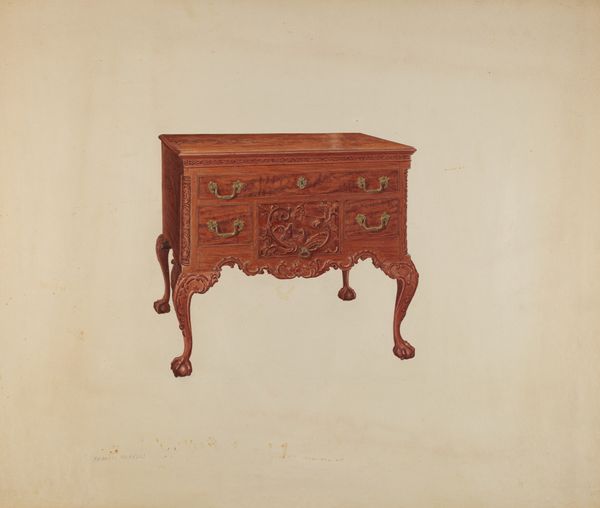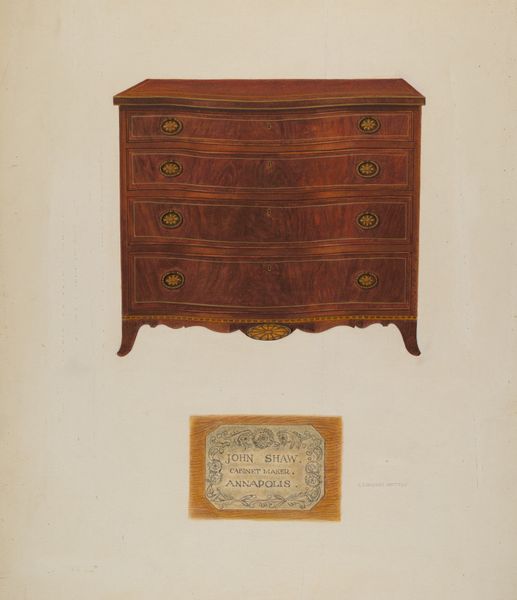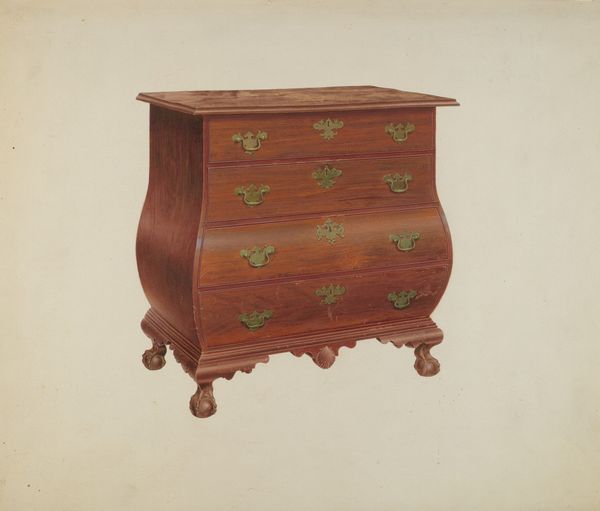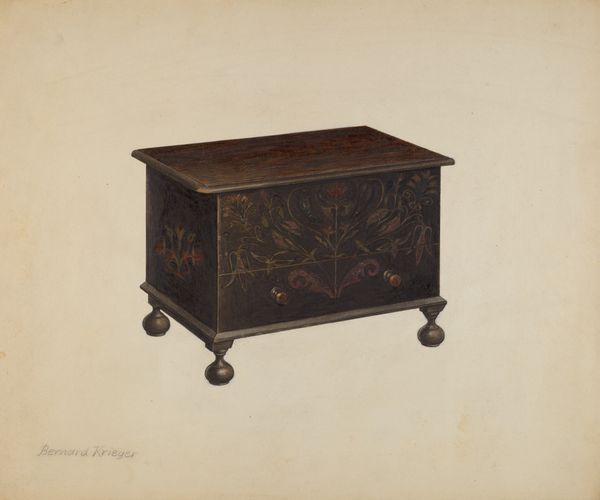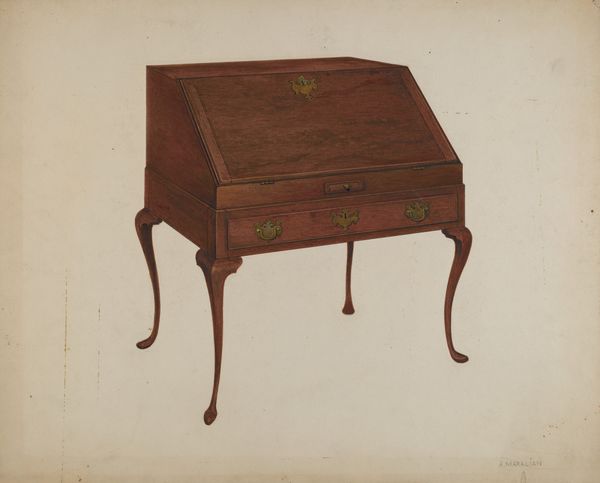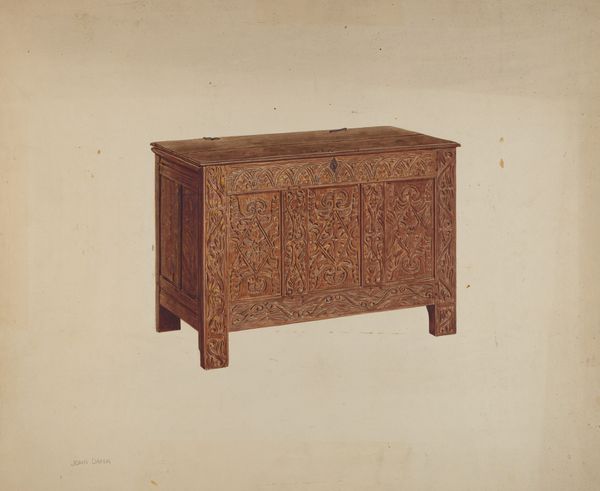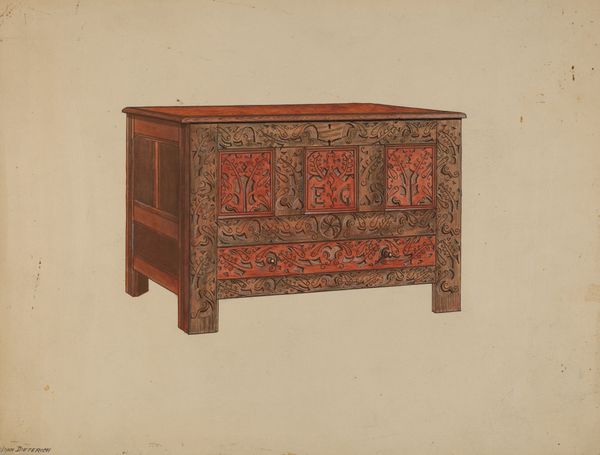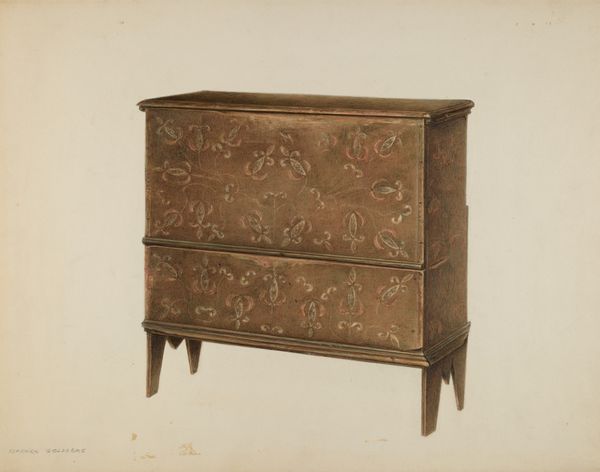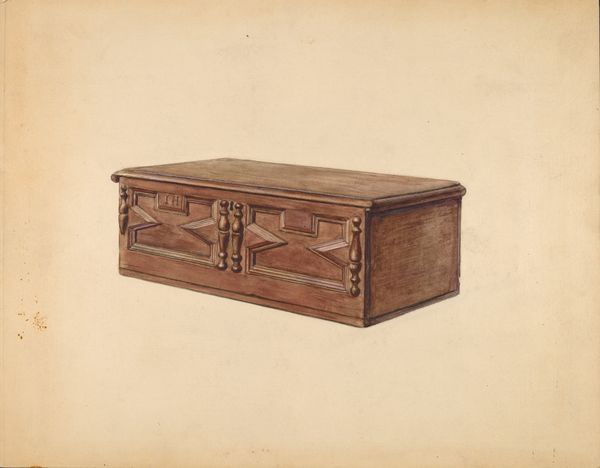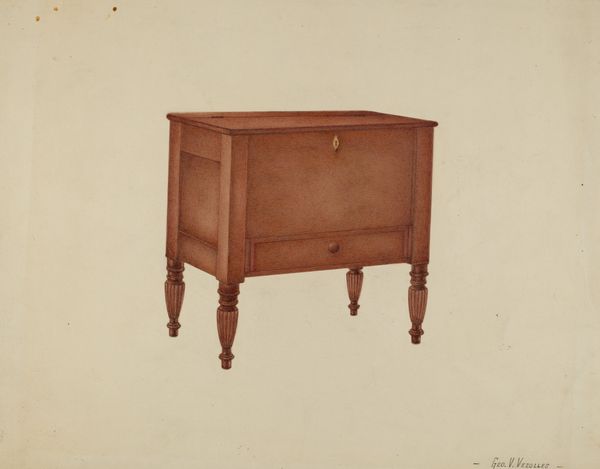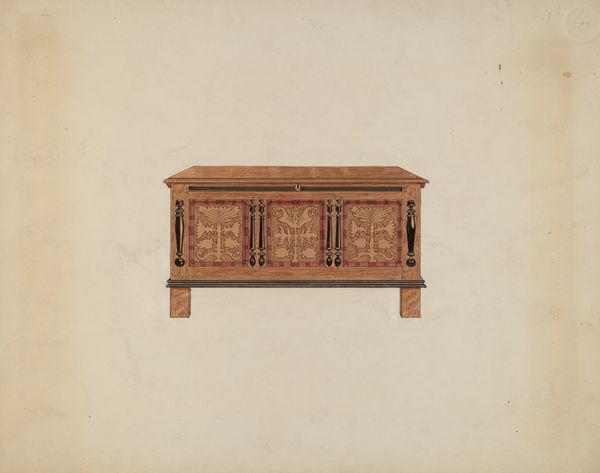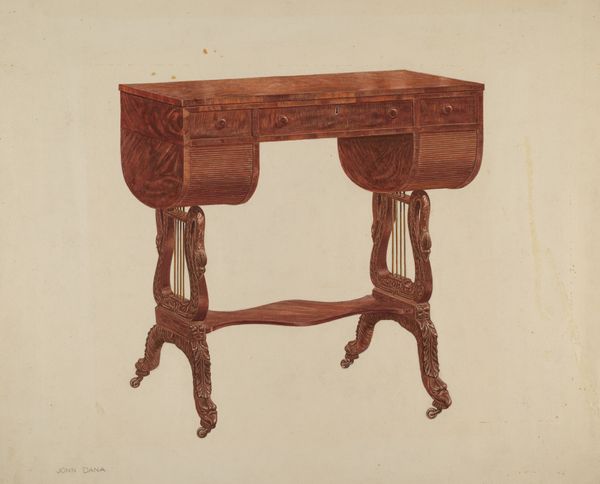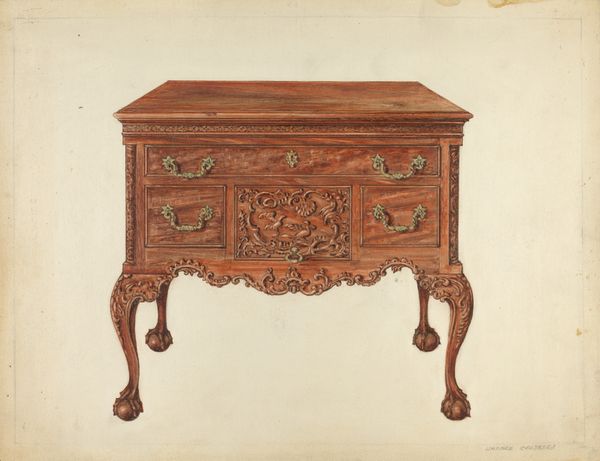
drawing, paper, watercolor
#
drawing
#
water colours
#
paper
#
watercolor
#
pastel chalk drawing
#
orientalism
#
academic-art
#
watercolor
Dimensions: overall: 40.6 x 50.6 cm (16 x 19 15/16 in.) Original IAD Object: 16 1/2"high; length of top and side 21x16 inches.
Copyright: National Gallery of Art: CC0 1.0
Curator: This is Adele Brooks's "Ottoman," a watercolor and pastel chalk drawing on paper from around 1938. Editor: Oh, I adore it! It’s like a whisper of a memory, rendered with such delicate strokes. The whole piece feels faded and precious, like something unearthed from a forgotten attic. Curator: Indeed. What I find fascinating is how Brooks uses watercolor to evoke the rich textures of what appears to be wood. Notice how the grain is rendered, almost a trompe-l'oeil effect on paper. There’s a dialogue happening here between high-end furniture production and the accessibility of art-making. Editor: Exactly! It's also kind of hilarious, right? Taking something inherently about luxury and permanence—this Ottoman is clearly trying to be bougie—and rendering it in the most ephemeral materials. Curator: The application of water colors, alongside what might be pastel chalk drawings on paper suggests Brooks wanted to capture the essence of the Ottoman and evoke its social context of orientalism in art and design, rather than simply replicating it. The choice of media feels deliberate. Editor: I can't help but see a bit of wry commentary. The floral design on top – is that hand-painted, do you think? It looks deliberately old-fashioned and evokes craftsmanship as well. Curator: It does appear to be hand-painted, and this emphasis on the handmade raises questions about value. In its time, was this drawing viewed as merely decorative, or did it offer a deeper critique of class and taste? Editor: It definitely invites us to consider the labor involved – not just in the making of the ottoman itself, but in Brooks’s own act of creation. There is some visible use of technique in her rendering style, but her artwork looks simple in materials. It makes you think of the human hand, shaping and transforming materials. Curator: A very good point! Thinking about consumption and aesthetics it definitely puts the question of art’s value into perspective. And by depicting furniture—an object intended for daily use and display—Brooks forces us to confront how we interact with both art and functional objects. Editor: Well, now I look at it, there is a ghost image where she perhaps practiced this piece! Now, I’m considering her studio setup at that time, and her intentions on that day...it pulls on threads I could explore for hours. Curator: Precisely. Editor: This was definitely one intriguing Ottoman.
Comments
No comments
Be the first to comment and join the conversation on the ultimate creative platform.
